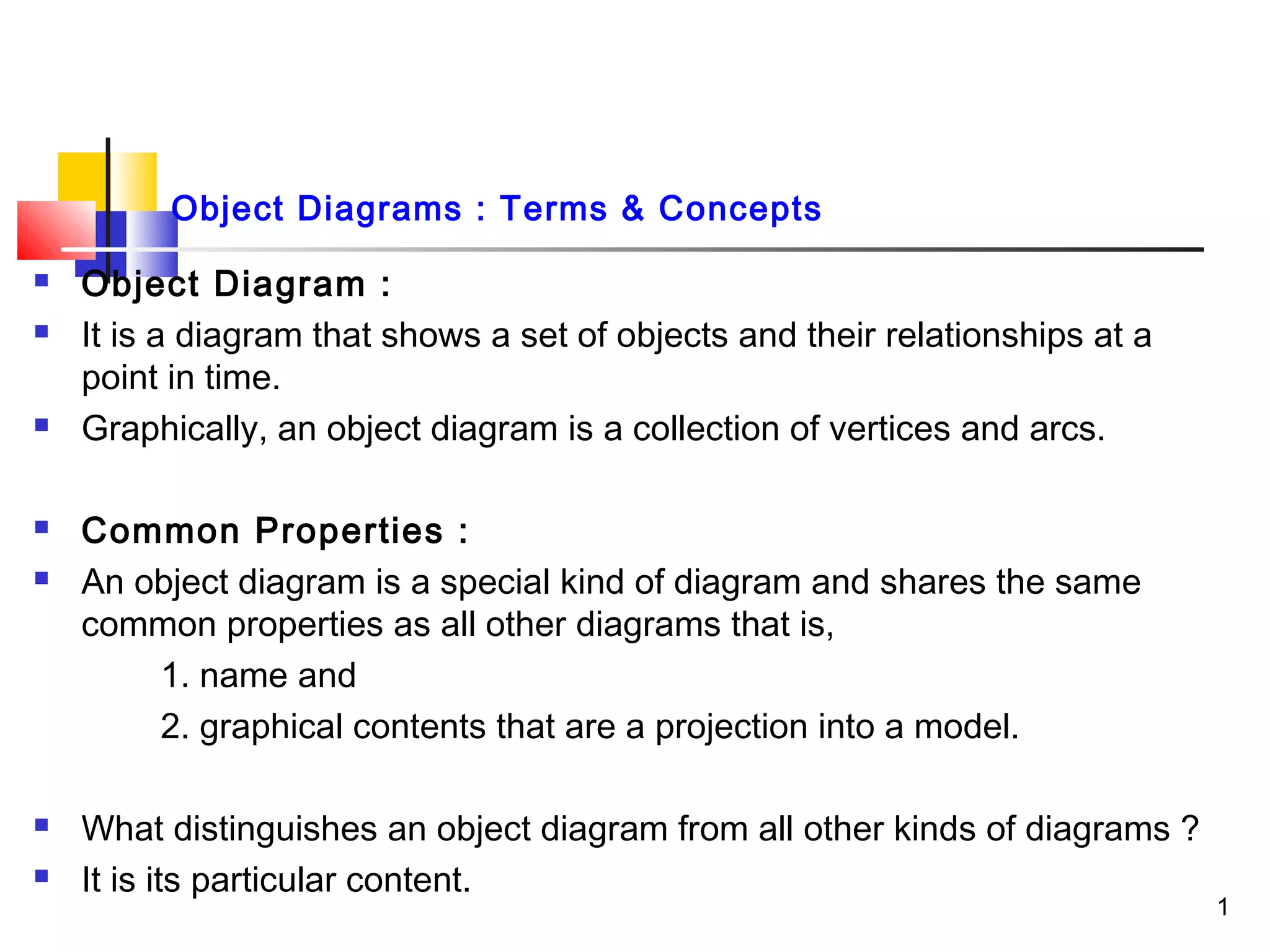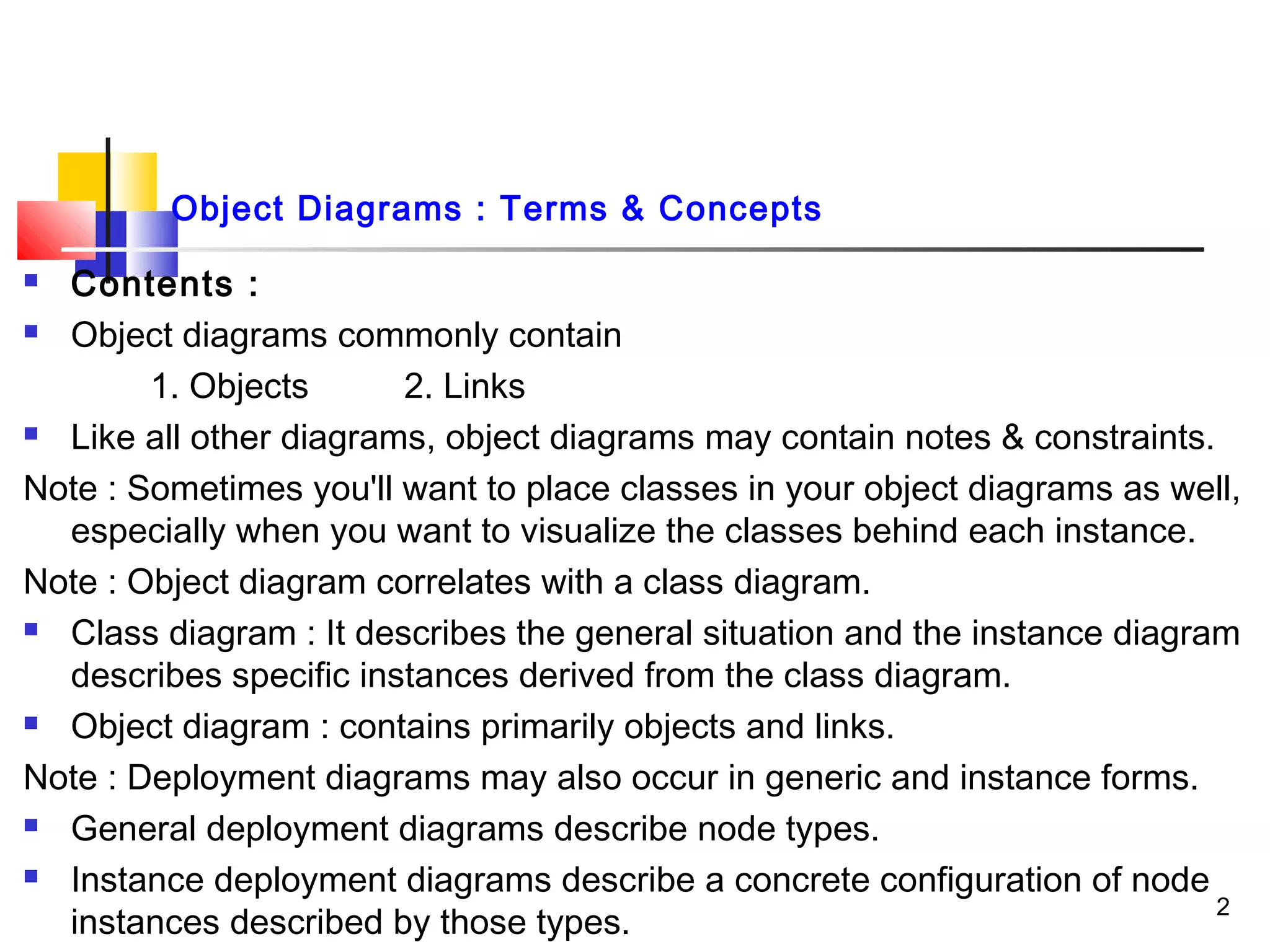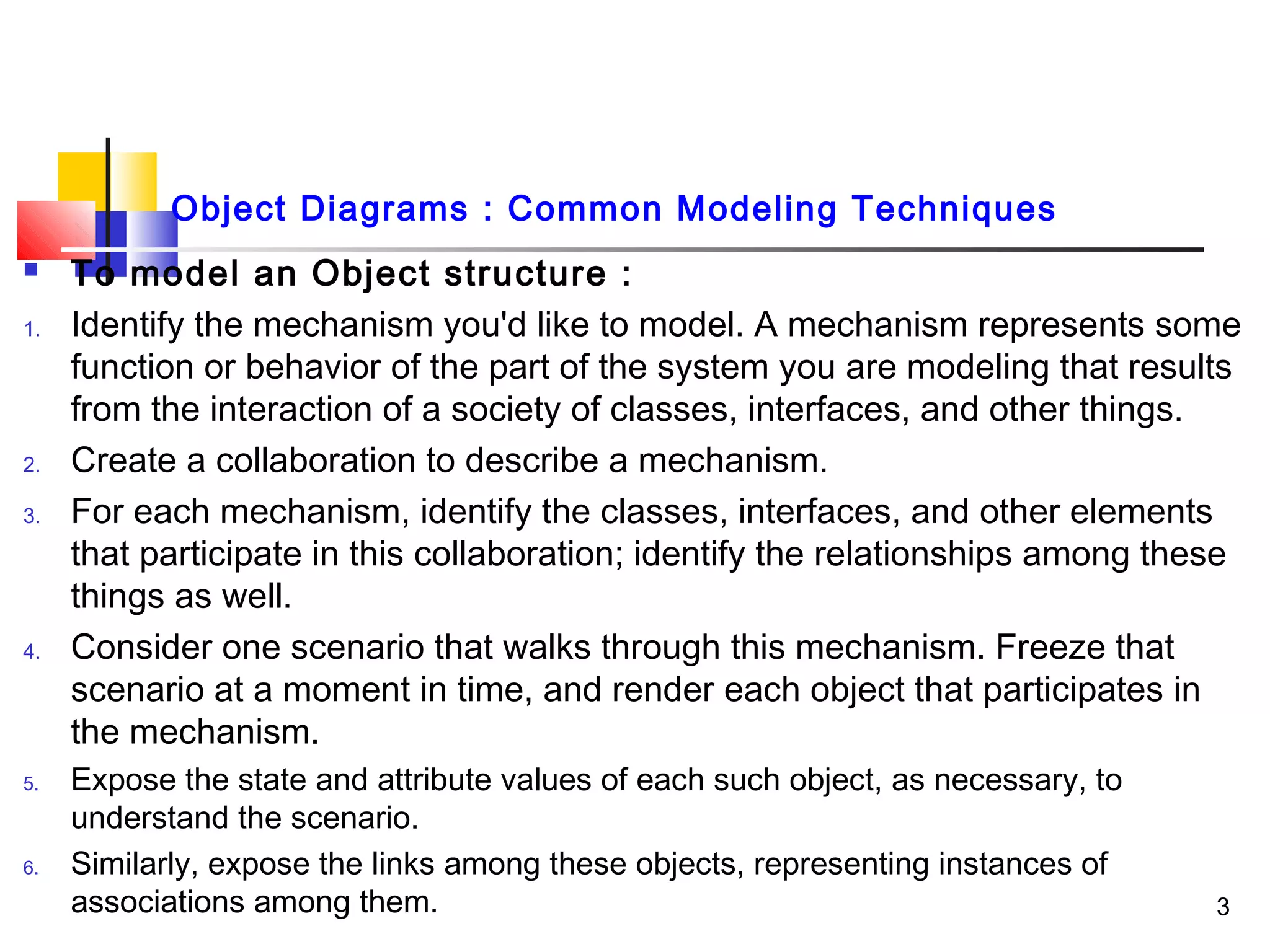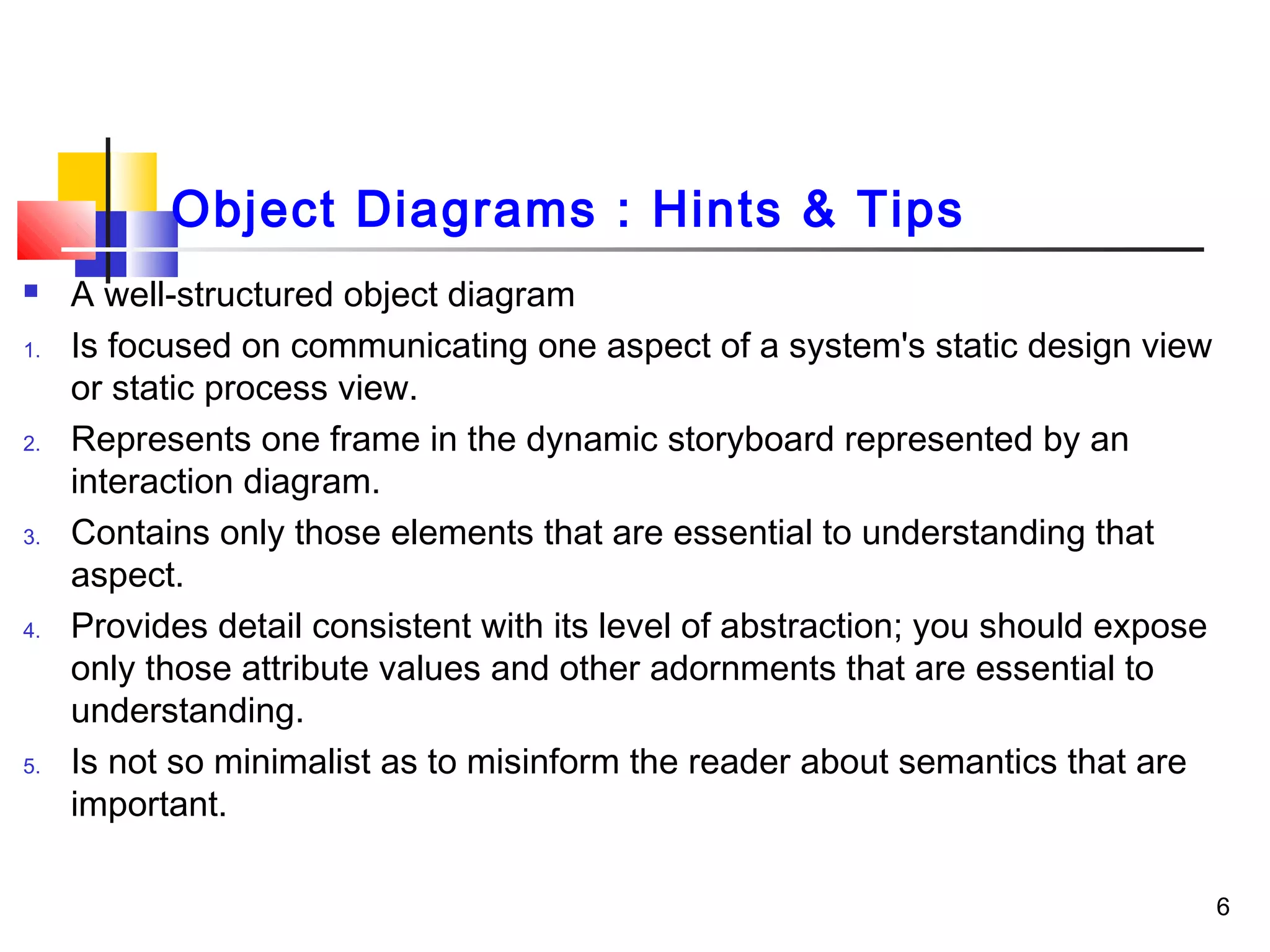An object diagram is a visual representation of objects and their relationships at a specific moment, featuring objects, links, and potentially notes and constraints. It correlates with class diagrams, which describe generalities, while object diagrams focus on specific instances and states. Effective modeling includes identifying mechanisms, exposing relevant states and links, and ensuring clarity in communication while representing the system's static design view.






